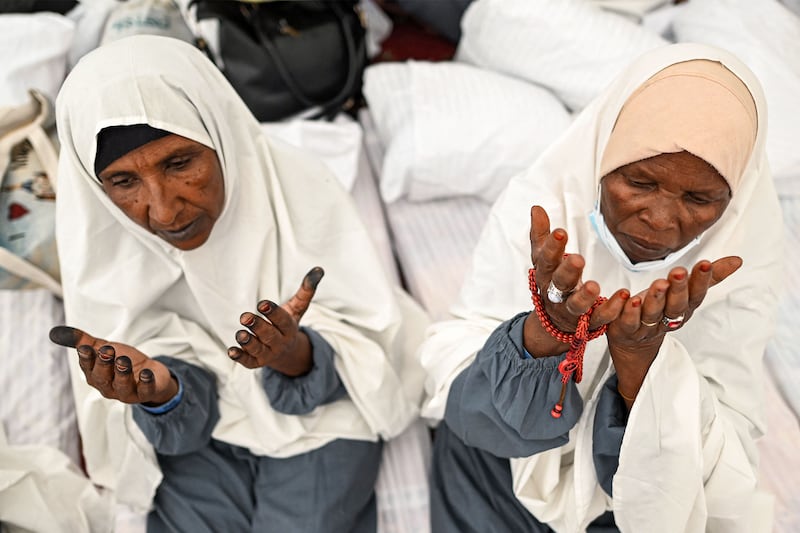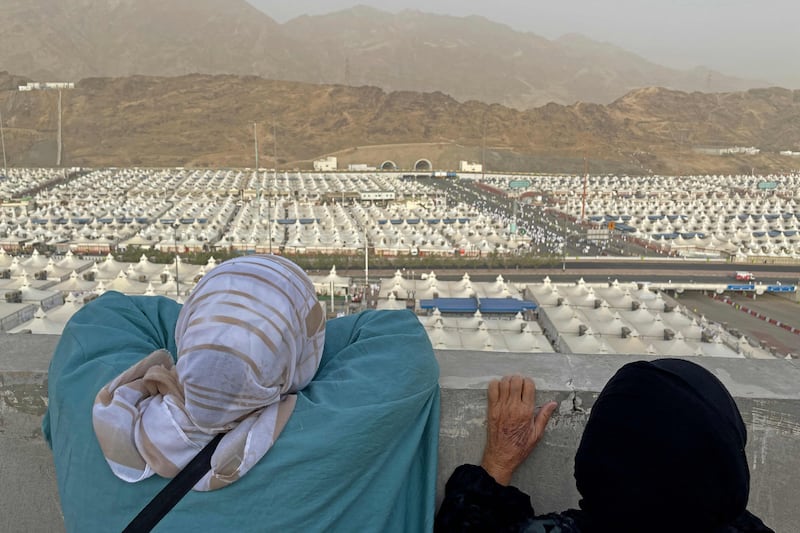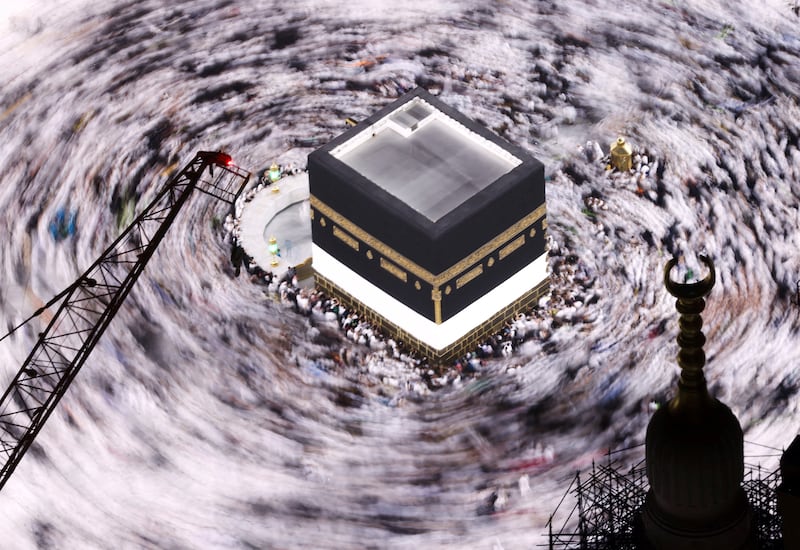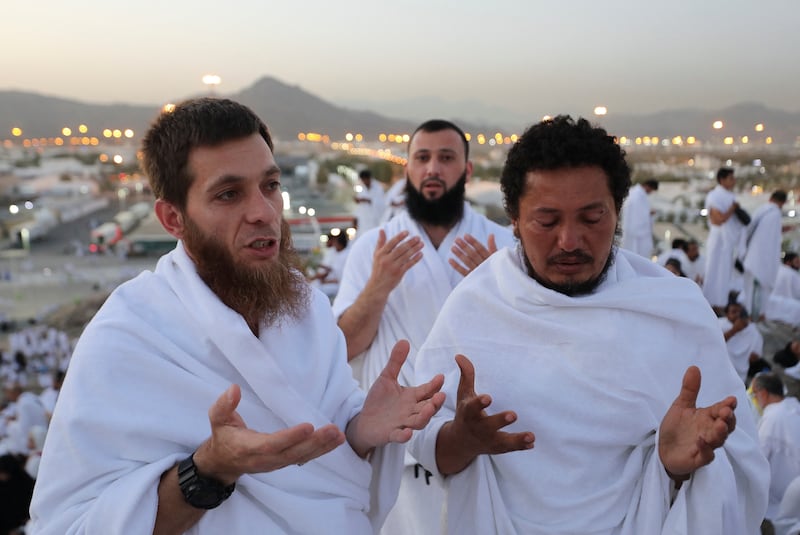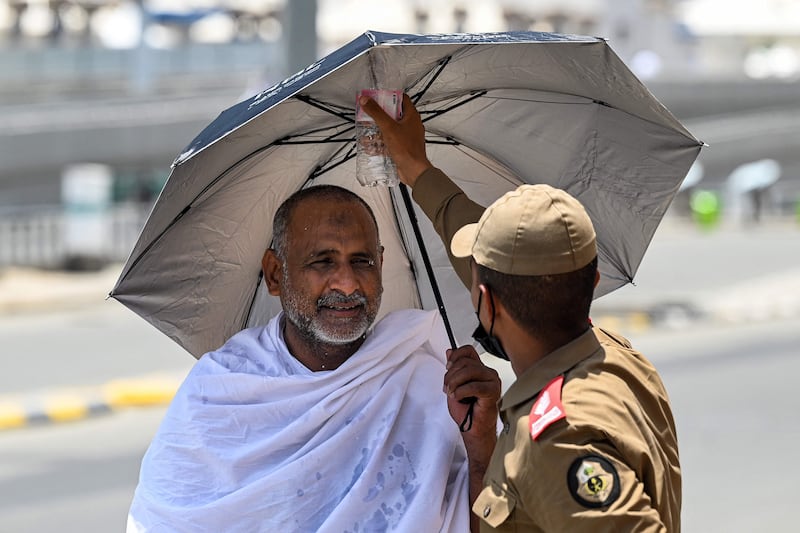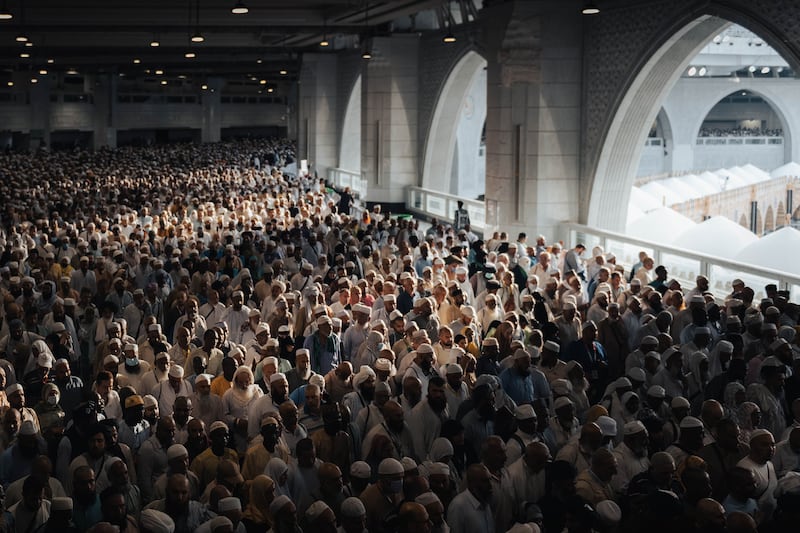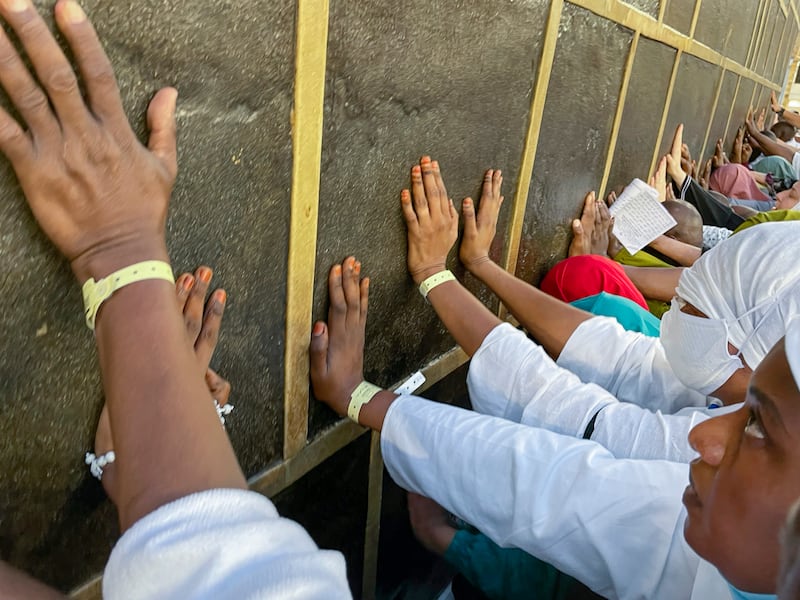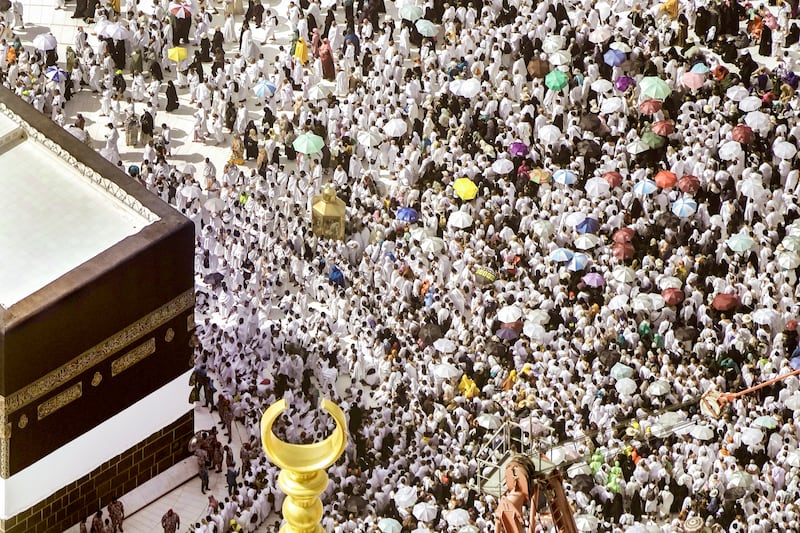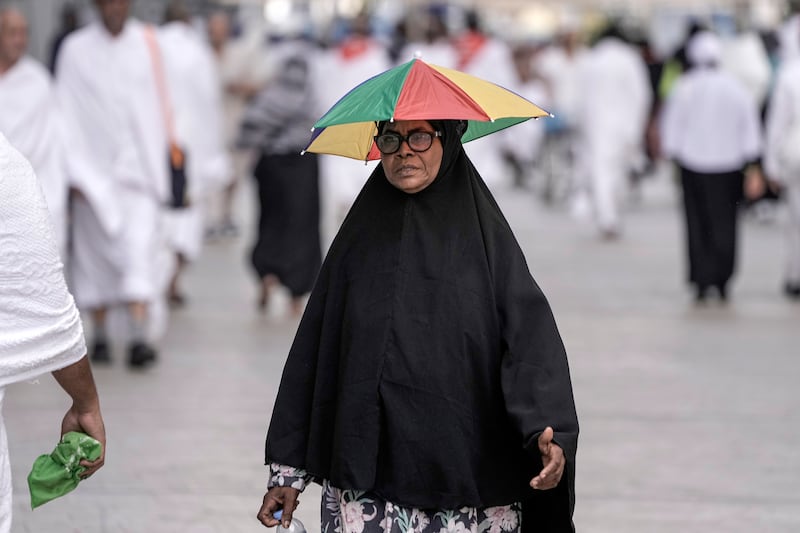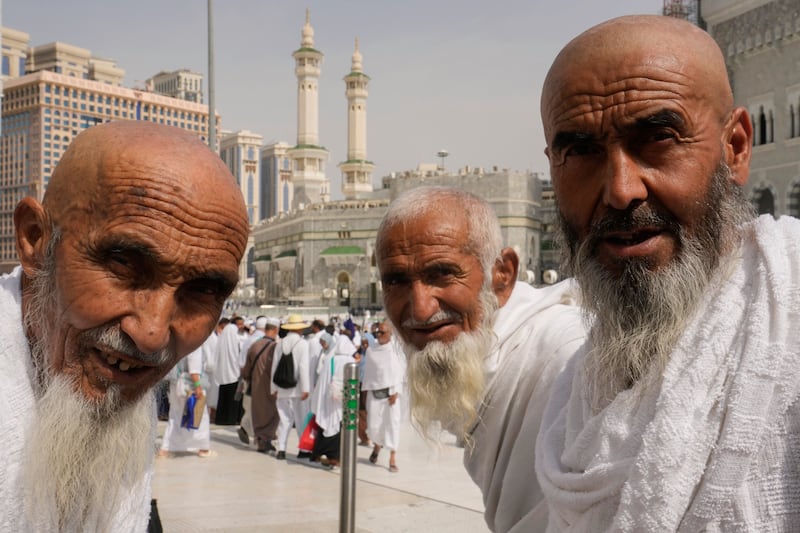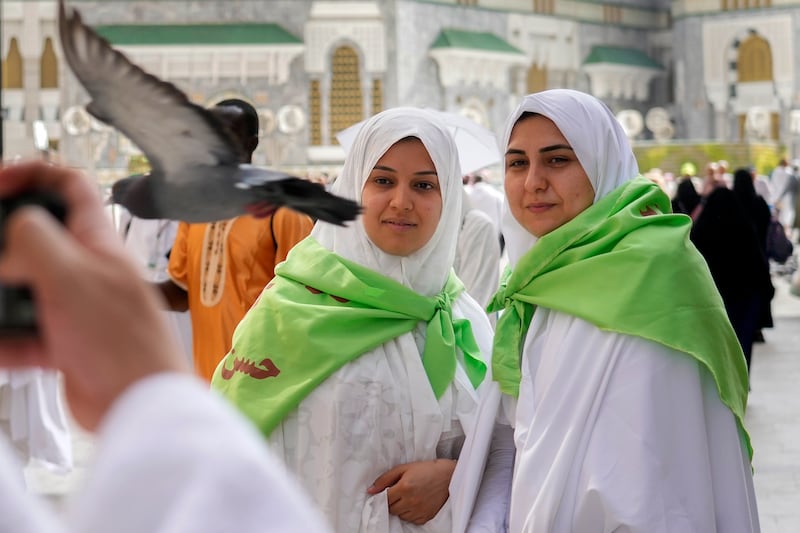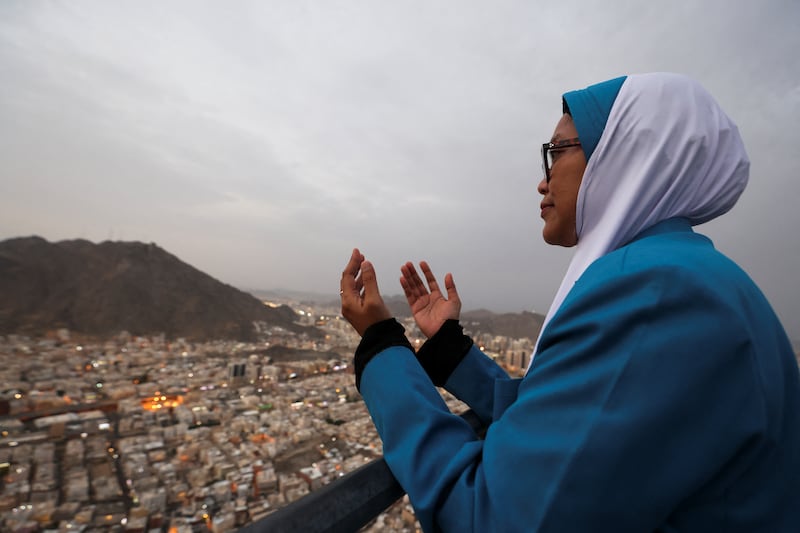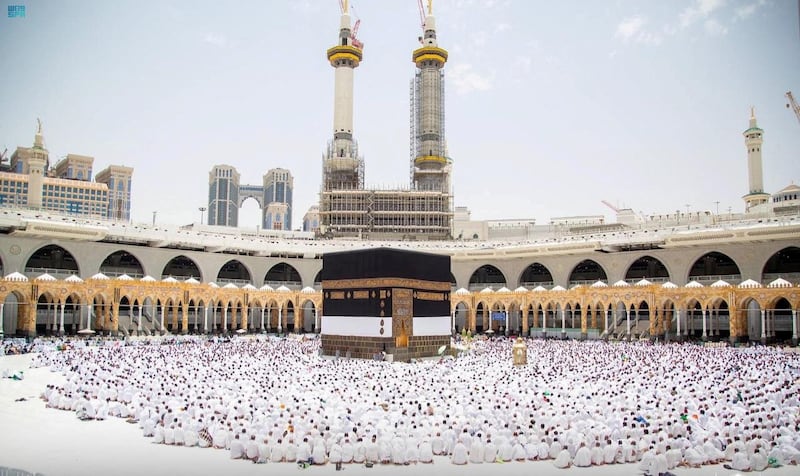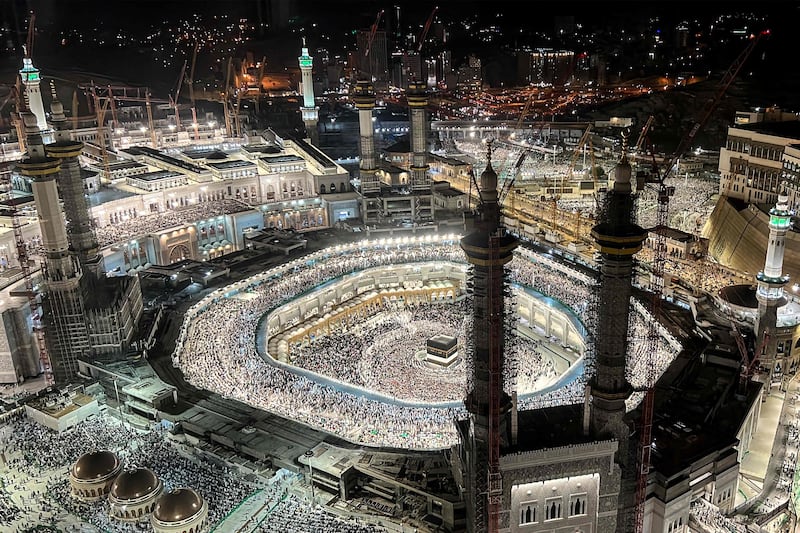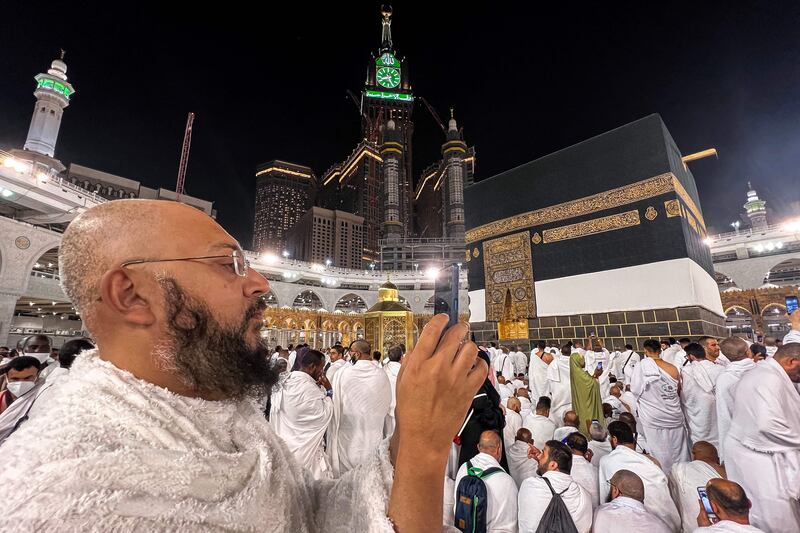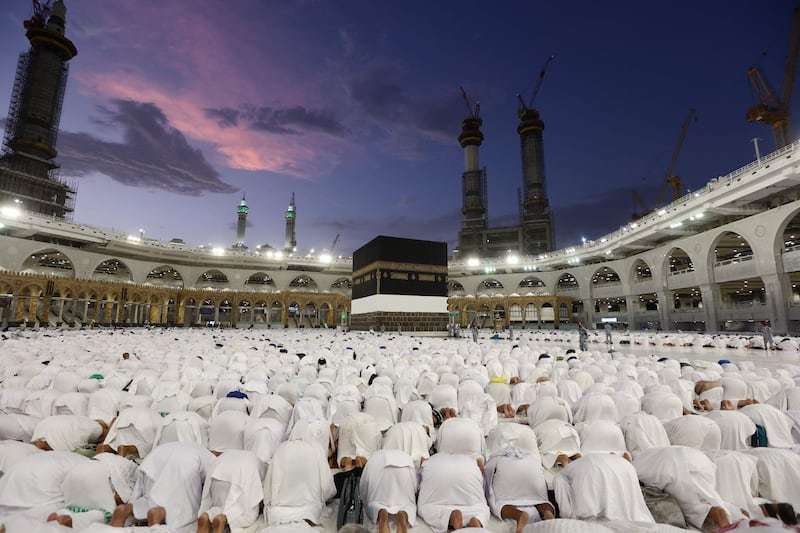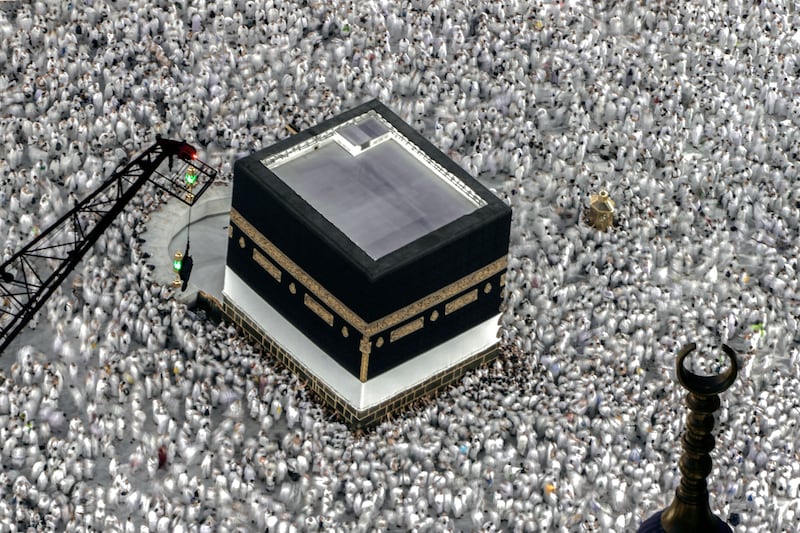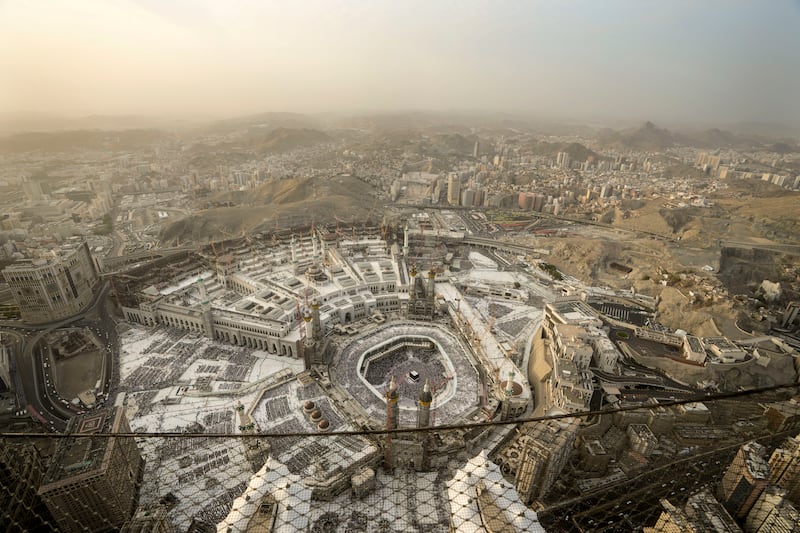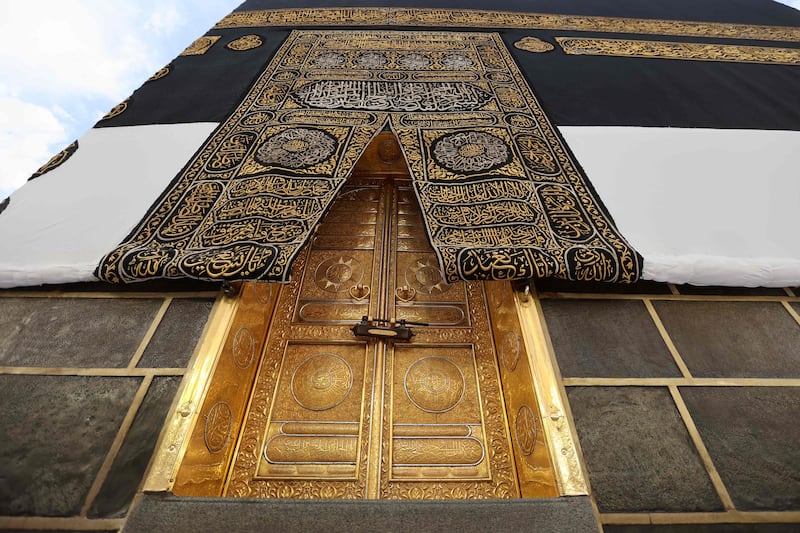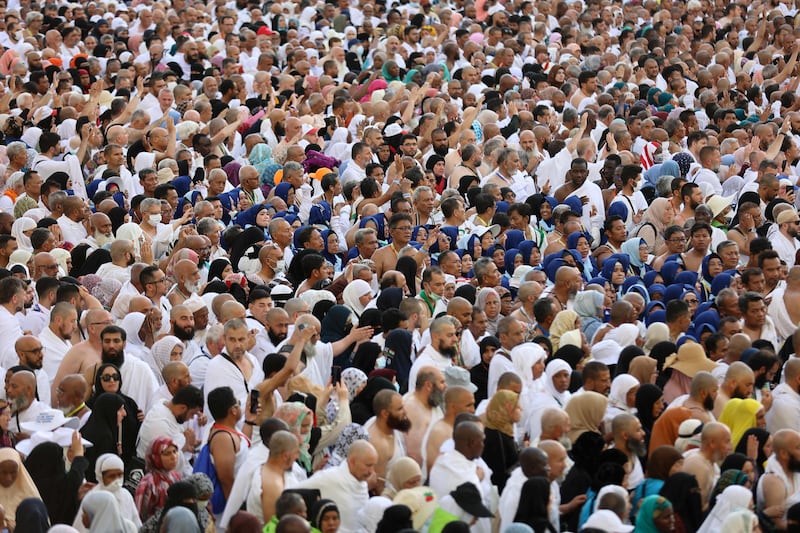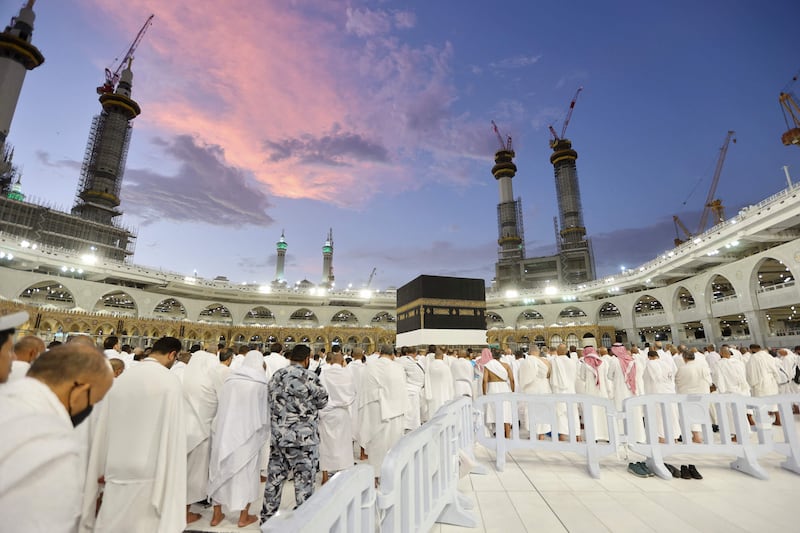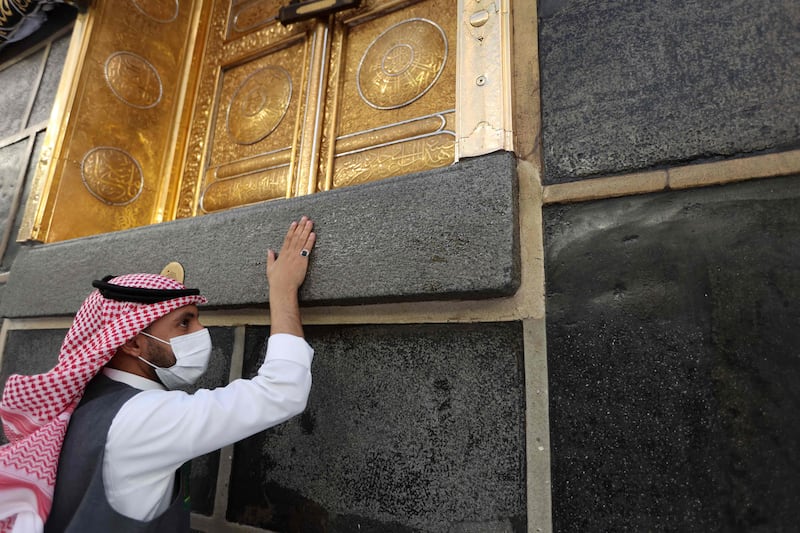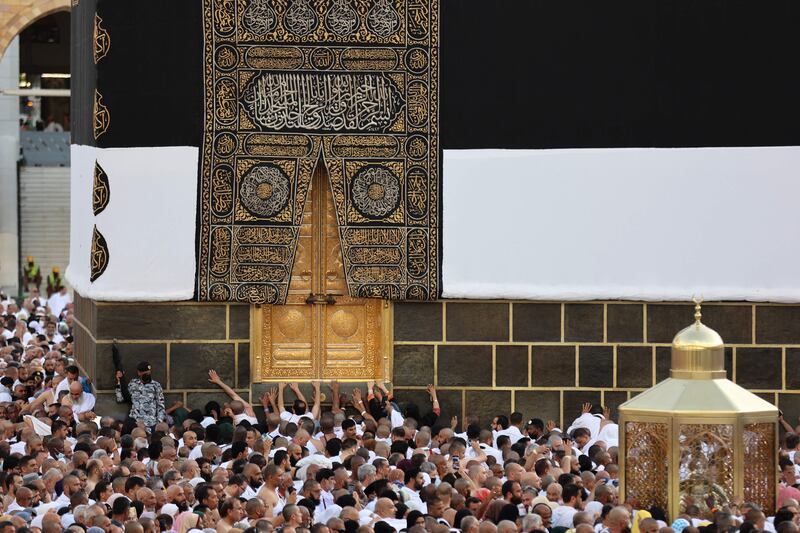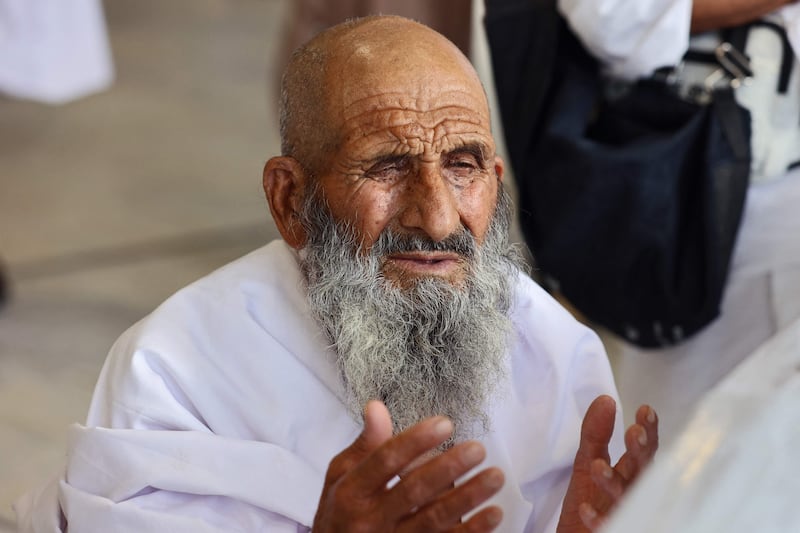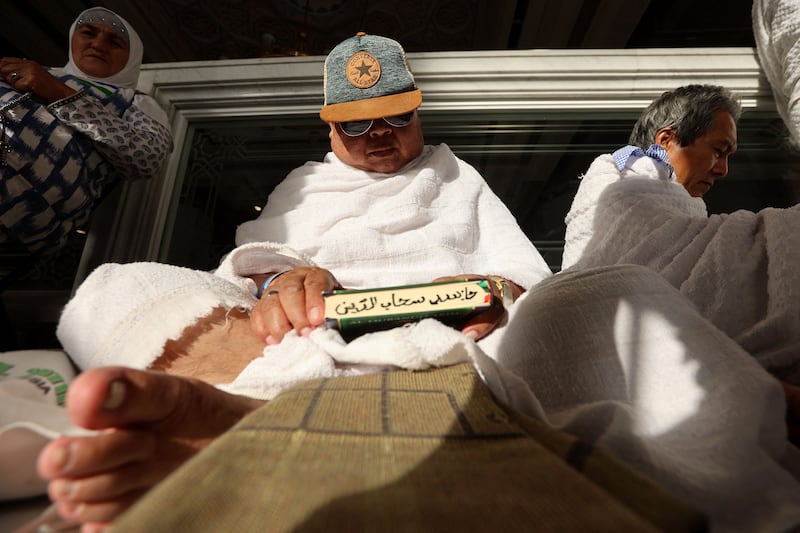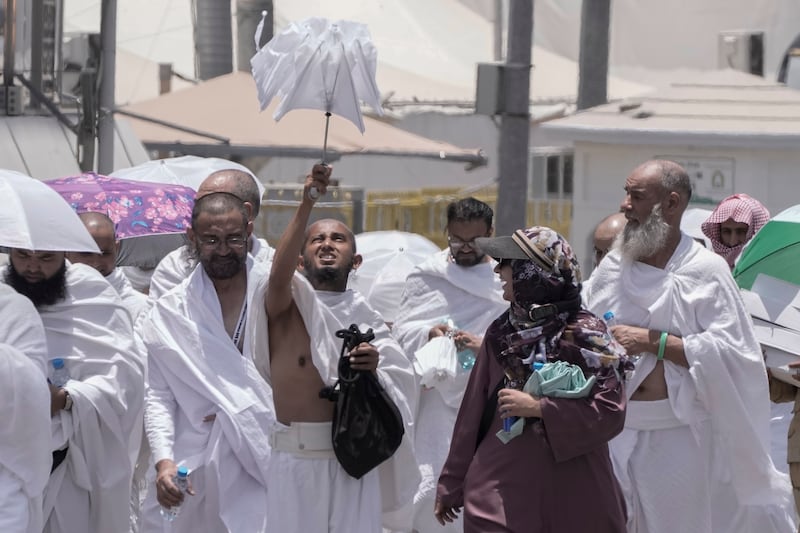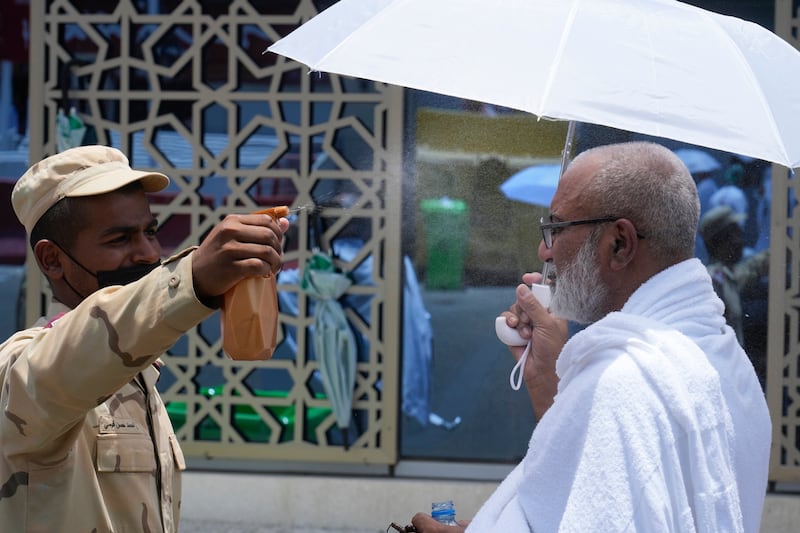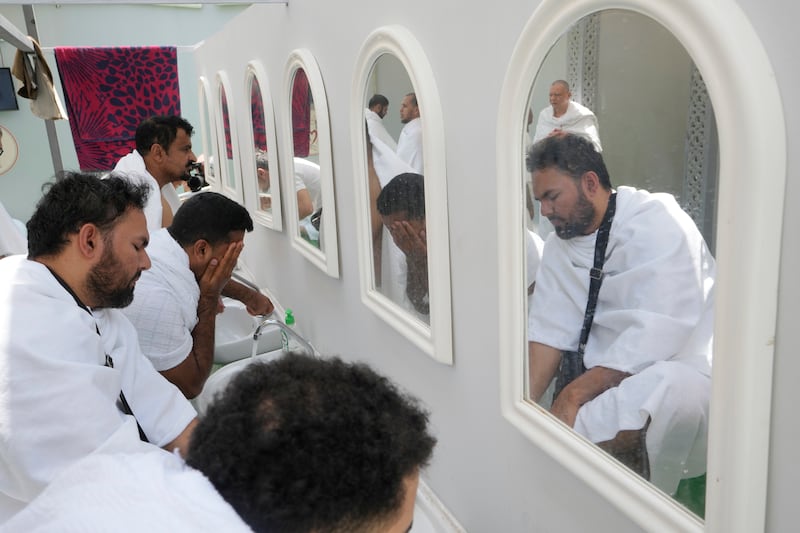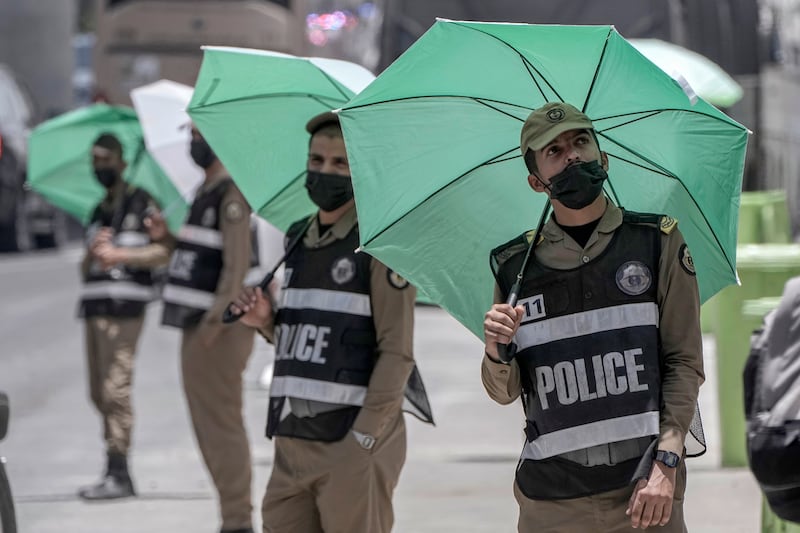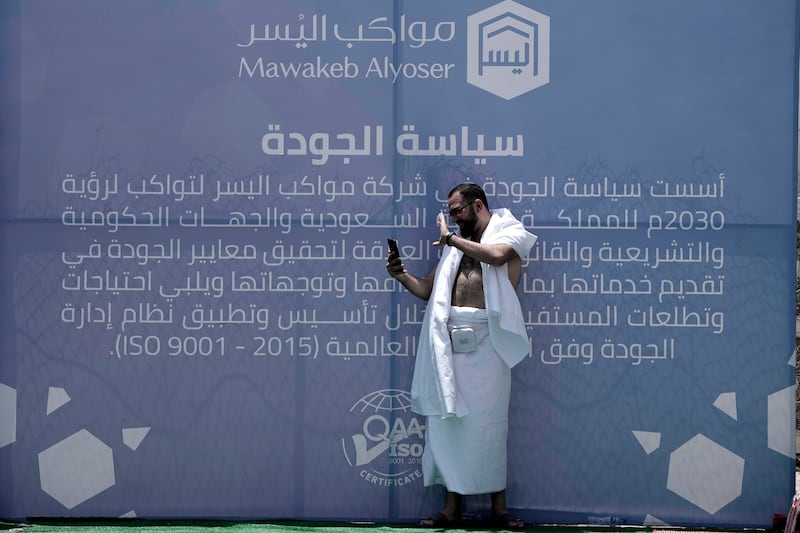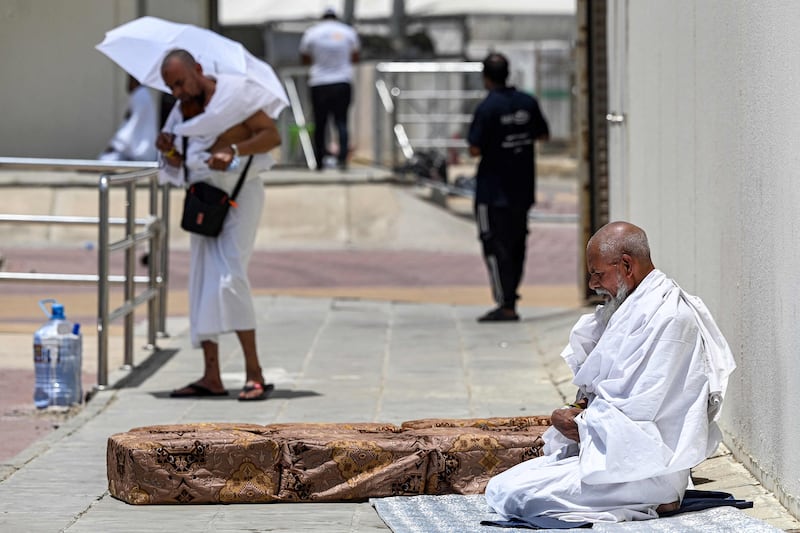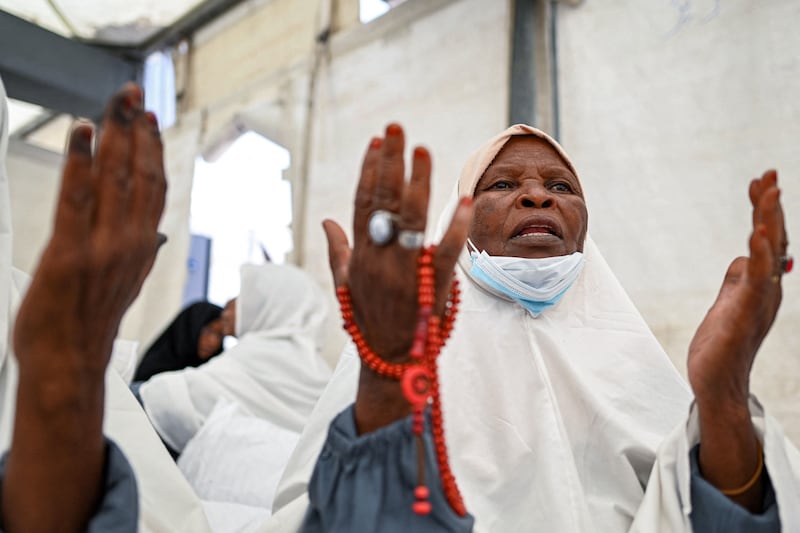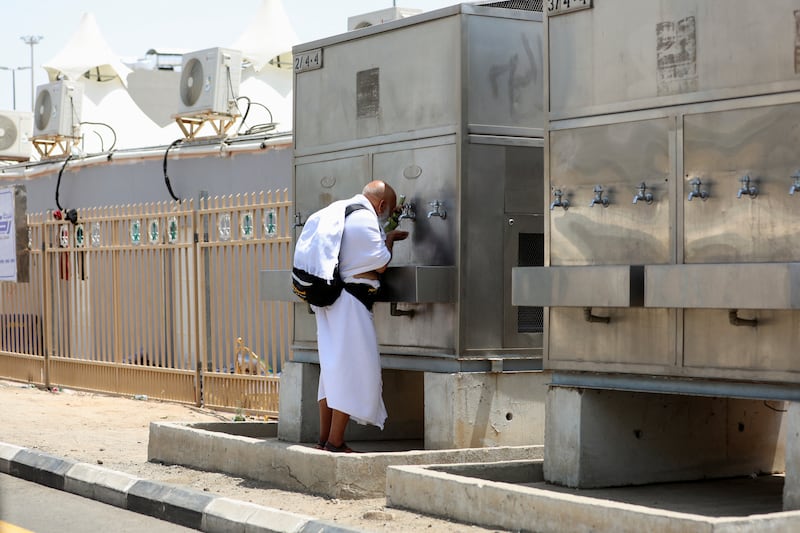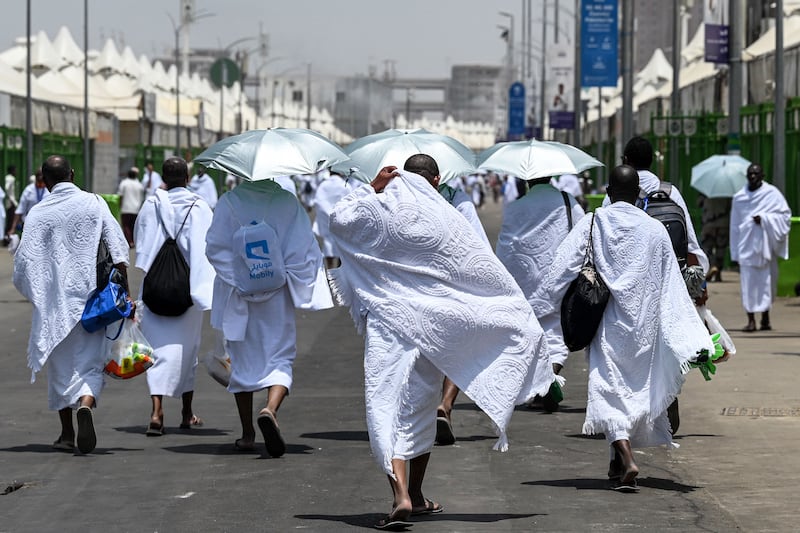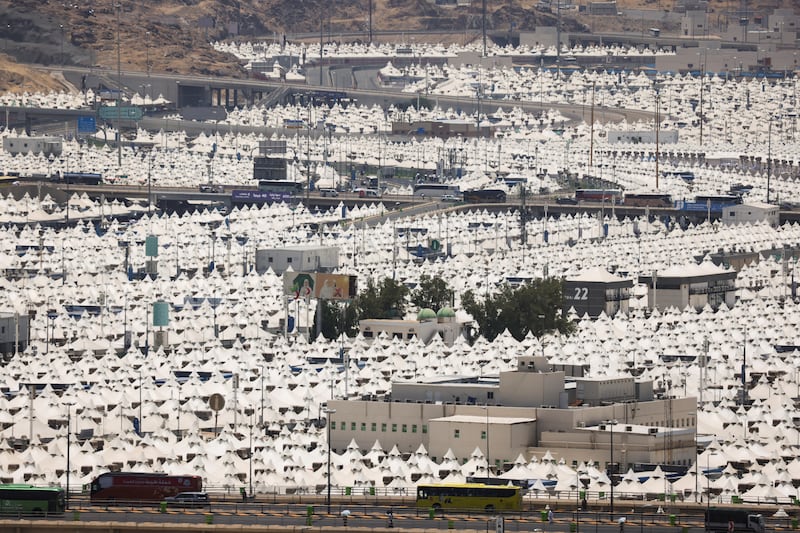Read the latest updates on the Hajj pilgrimage here
More than 2 million worshippers are expected to begin the annual Hajj pilgrimage in Saudi Arabia on Monday, in the biggest turnout since the Covid-19 pandemic.
About 2.5m pilgrims took part in 2019, with safety and travel restrictions in place to guard against the virus leading to reduced numbers in subsequent years.
Authorities in the Kingdom said they will welcome visitors from 160 countries this year.
The Deputy Minister of Hajj and Umrah Dr Abdulfattah Al Mashat, said on Sunday that the ministry had issued 1.8 million Hajj e-visas for this year's Hajj season.
By Friday more than 1.6 million pilgrims had arrived by land, air and sea, Saudi Arabia's General Directorate of Passports said on Saturday
Hajj pilgrims visited the Prophet's mosque in Madinah ahead of the Hajj season, which starts on Monday.
A total of 400 service packages are on offer to more than a million pilgrims this year, with 20,000 buses deployed as Hajj returns to its pre-pandemic capacity.
First day of Hajj
Pilgrims will pour into Makkah to perform the first ritual of Hajj early on Monday.
On the eighth day of Dhu Al Hijja, known as the Day of Tarwiyah, pilgrims follow in the footsteps of the Prophet Mohammed and travel to Mina.
Large numbers of pilgrims will make their way by bus, car and even on foot from Makkah to Mina, east of the city, before moving to Mount Arafat the following day.
The main focus of the Day of Tarwiyah, the first official day of the Hajj season, is on prayer, as men and women gather in thousands of large fire-resistant tents in Mina and spend the day and night in a state of spiritual contemplation as they prepare for the tough days ahead.
Mina, which is situated between mountains on the north and south, is 16.8 square kilometres in area and located between Makkah and Muzdalifah. The place is inhabited only during the Hajj.
The pilgrims perform the Dhuhr, Asr and Isha prayers in Mina at their designated times but in shortened form.
The Maghrib prayer, which cannot be shortened, is performed as usual.
The pilgrims spend the night in tents and head to Mount Arafat the next day after performing the Fajr prayer, which marks the peak of the annual pilgrimage.
New services to improve experience
The Agency of the General Presidency for the Affairs of the Prophet’s Mosque has said that it has significantly increased its efforts during this year’s Hajj season, with a particular focus on providing guidance and education to visitors in multiple languages.
Over 30 interpreters proficient in a number of languages have been employed to educate and assist pilgrims. The interpreters will be available on site, but also via the internet or the telephone. Saudi authorities have also used multilingual signage to guide pilgrims throughout their Hajj journey.
The General Presidency for the Affairs of the Two Holy Mosques has announced the launch of 185 programmes and initiatives, presented during this year’s Hajj season at the Two Holy Mosques in Makkah and Madinah.
The programmes aim to invest in artificial intelligence, digitisation and harnessing electronic applications in various fields to serve pilgrims and talk to them in foreign languages to facilitate Hajj rituals for them.
Worshippers will also have access to several new transport options that will facilitate their movement within and between the holy sites.
The General Directorate of Traffic (Muroor) has announced the provision of six interactive traffic maps to facilitate the Hajj pilgrims’ movement. The maps enable pilgrims to view traffic lines and itineraries in Makkah.
The maps cover Makkah, the holy sites, the Grand Mosque and its surrounding area, Mina, Muzdalifah and Mount Arafat.
The Transport General Authority has provided 1,000 electric scooters, which pilgrims can use to travel between the holy sites.
A two-lane track has been allocated for the e-scooters to separate them from other vehicles and pedestrians and preserve the safety of pilgrims.
The 2-kilometre track runs from Makkah's Kadana station to the Mahbas Al Jin tunnel, which leads to Bab Ali station in the Grand Mosque.
For the first time, the TGA has also deployed a fleet of self-driving electric buses to serve pilgrims this season, as it aims to provide innovative modern technologies for sustainable and environmentally friendly transport.
The buses use artificial intelligence, cameras and sensors to operate without human intervention along a predefined route.
Each bus has 11 seats, operates for six hours per charge and can reach speeds of up to 30 kilometres per hour.
In another first, the Saudi security services will be using virtual reality glasses with augmented reality technology.
Saleh Al Jasser, the Minister of Transport and Logistics Services, said this new technology is aimed at improving monitoring and reducing congestion at inspection points.
A video released by the Saudi Press Agency shows an officer using VR glasses to scan the vehicles' registration and monitor drivers' compliance with regulations.
